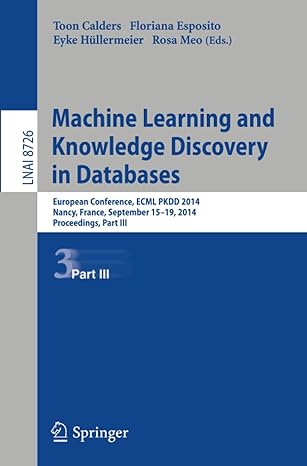Question
// Please implement the functions Autocompleter(string filename) and Node* construct_recurse(vector &E, int l, int r) that are found in this header in c++ #pragma once
//Please implement the functions Autocompleter(string filename) and Node* construct_recurse(vector
#pragma once #ifndef AUTOCOMPLETER_H #define AUTOCOMPLETER_H
#include
using namespace std;
class Autocompleter { // For the mandatory running times below: // n is the number of strings in the dictionary. // Assume that the length of every string is O(1).
public: // Creates a dictionary of strings and associated frequencies, // using the file as a source. The file is promised to have // the following format: // // string1 freq1 // string2 freq2 // ... // stringN freqN // // where string1 < string2 < ... < stringN // // Must run in O(n) time. Autocompleter(string filename);
// Returns the number of strings in the dictionary // of possible completions. // // Must run in O(n) time. int size();
// Fills the vector T with the three most-frequent completions of x. // If x has less than three completions, // then T is filled with all completions of x. // The completions appear in T from most- to least-frequent. // // Must run in O(log(n) + k) time, // where k is the number of completions of x in the dictionary. void completions(string x, vector
private: // A helper class that stores a string and a frequency. class Entry { public: string s; int freq; };
// A helper class that implements a BST node. class Node { public: Node() { left = right = nullptr; }
Node(Entry e) { this->e = e; left = right = nullptr; }
Entry e; Node* left; Node* right; };
// Root of the binary-search-tree-based data structure Node* root;
// Optional helper methods (you'll probably want them).
// Returns the root of a BST containing the elements // of the portion of a sorted vector E from index l to r. // // Should run in O(r-l) time. Node* construct_recurse(vector
// Returns the size of the binary tree rooted at root. // // Should run in O(n) time. int size_recurse(Node* root);
// Fills T with the three most-frequent completions of x // that are either: // -In the BST rooted at root. // -Already in T. // // Should run in O(log(n) + k), where // -n is the size of the BST rooted at root. // -k is the number of Entrys in the BST rooted at root // whose strings start with x. void completions_recurse(string x, Node* root, vector
#endif
Step by Step Solution
There are 3 Steps involved in it
Step: 1

Get Instant Access to Expert-Tailored Solutions
See step-by-step solutions with expert insights and AI powered tools for academic success
Step: 2

Step: 3

Ace Your Homework with AI
Get the answers you need in no time with our AI-driven, step-by-step assistance
Get Started


